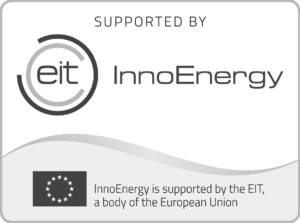16.01.2023
Novel public-private partnership contributes to the implementation of cancer control plan

The Ministry of Social Affairs, the Health Insurance Fund, the pharmaceutical companies MSD, AstraZeneca and Roche and the Connected Health Cluster, led by Tehnopol, signed a consortium agreement to improve lung cancer patient pathway in cooperation and thus contribute jointly to the implementation of the national cancer control plan.
The cancer control plan until year 2030 highlights the problem that cancer patients’ pathway, which starts from cancer suspicion and extends to the post-treatment period, is not addressed in its entirety, and the patient’s quality of life and satisfaction at different stages of the cancer journey are not measured. The design of patient-centred comprehensive cancer pathways is seen as a solution. “In collaboration, the lung cancer patient’s journey will be mapped to find pain points and develop innovative solutions that better respond to the needs of the patient, ensure quality and continuity of care” said Made Bambus, chief specialist in the Department of Health System Development at the Ministry of Social Affairs.
To map the pathway, different methods are combined. The service design study puts a patient and carer at the heart and examines their experiences and needs at different stages of the journey and in moving from one stage to another, where the biggest bottlenecks of the system often appear.
According to Nele Labi, Deputy Secretary General for Innovation at the Estonian Ministry of Social Affairs, at various stages of the journey not only health services but also support of the social system are important for coping with a serious illness. “Today, health and social care systems function in silos — resources are planned separately from each other and performance is measured differently. In this project, we want to create a data-driven management model that looks at all needs, decisions and expenditures that come with the disease,” Nele Labi said. “We want to be able to make smarter and more human-centric decisions in the future that take into account a person’s quality of life as a whole in different spheres – health, work and social life.”
According to Tiina Sats, Head of Specialised Healthcare Department, the Health Insurance Fund’s development plan for 2022-2025 provides for a greater focus on health and care pathways. This includes both the development of service models for a comprehensive care pathway, measuring health outcomes and service experience, and the introduction of reimbursement models that support improving outcomes.
“First of all, we need to address those care pathways where the greatest impact can be achieved — where the number of patients is high and the journey is complex. So dealing with the lung cancer patient journey is well justified,” Tiina Sats said. “During 2023 we will create a standard for the development of care pathways, which includes general principles and could be helpful to all parties involved. The Lung Cancer Patient’s Journey Improvement Project provides an important input for this.”
Three companies have joined the consortium and it is open to additional partners from both the private and public sectors. “Compared to the rapid development of health technologies, national health care systems have remained relatively unchanged and are facing serious challenges. With this new generation public-private partnership we would like to contribute to the necessary changes so that Estonian health system becomes more human-centred, services more integrated and that limited resources are used more efficiently. We aim to support the creation of innovations increasing the resilience of the health care systems that would change outcomes of cancer management for patients in Estonia,” Daniela Pavlic, Baltic country director at AstraZeneca summarised the interest of companies.
The implementation of the project is led by the Connected Health Cluster, part of the research and business campus Tehnopol, which has been called to support innovative solutions in health and welfare. “The cluster has considerable experience in similar projects and a network to engage potential solution providers after the needs have become clear,” said Piret Hirv, head of the cluster.
For further information, click here.












